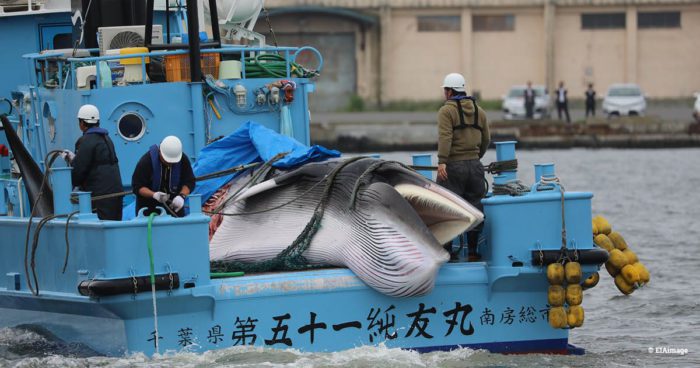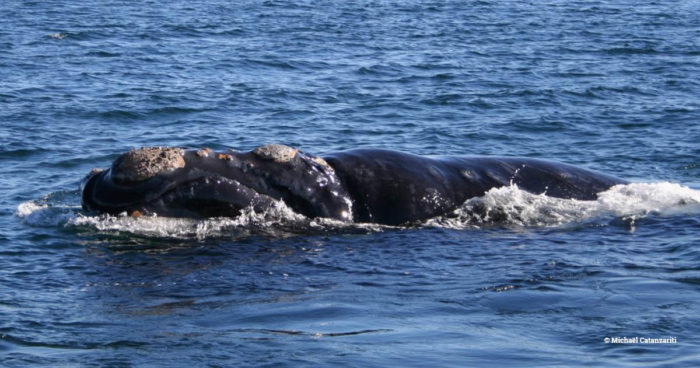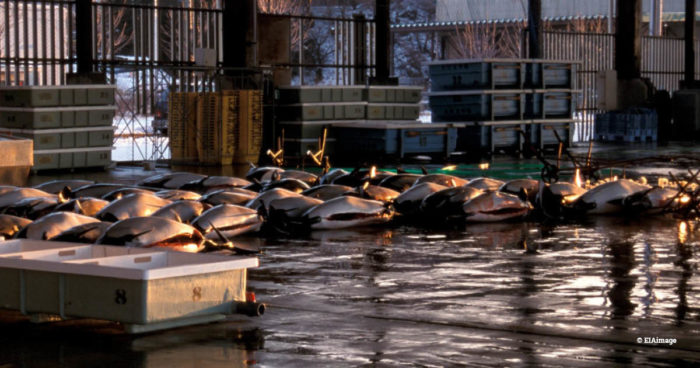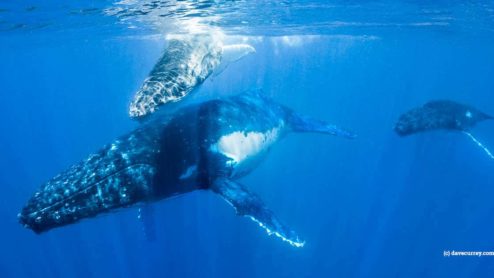Celebrating the global ban on commercial whaling –as important now as it was 40 years ago
Forty years ago tomorrow (23 July), contracting governments to the International Whaling Commission (IWC) meeting at Brighton’s Metropole Hotel voted by 25 to seven for a global ban on commercial whaling, commonly known as ‘the moratorium’.
This was one of the most important conservation and welfare decisions of the 20th century and is as important today as it was four decades ago.
By 1982, almost three million great whales had been killed in industrial whaling operations since the start of the 20th century and concerns about the devastation of great whale populations and the extreme cruelty of whaling had galvanised the public and convinced a majority of members of the IWC that the only way to save great whales from extinction was to ban all commercial whaling.
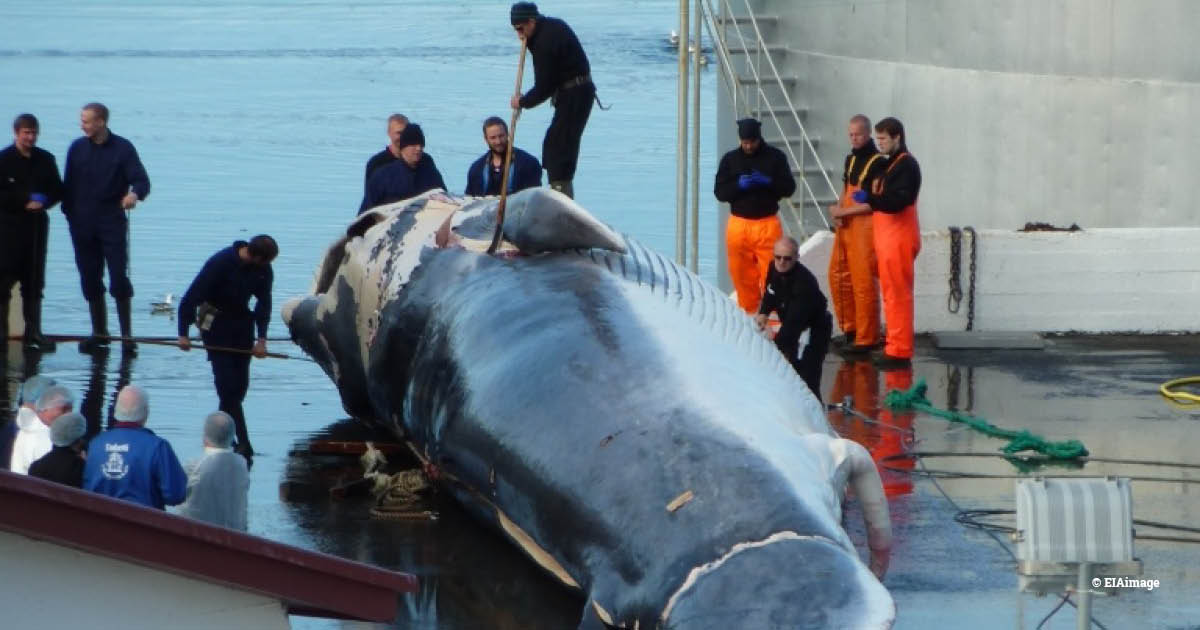
Fin whale landed at Miòsandur whaling station, Iceland, in August 2014 (c) EIA
Despite strong opposition lead by Japan, Norway and Iceland, the ban has remained in place ever since, saving the lives of hundreds of thousands of whales. Most whale populations are now beginning the slow recovery from the edge of extinction and providing vital ecosystem services to the marine environment and economic benefits to coastal communities just by living their normal, extraordinary lives.
This week, members of Wildlife and Countryside Link (WCL), including EIA and the Department for Environment, Food and Rural Affairs (Defra), returned to the same hotel on Brighton seafront (now the Hilton Metropole) to jointly host a commemoration of the 40-year-old moratorium.
A permanent memorial plaque was unveiled in the hotel lobby by James Smith, UK Commissioner to the IWC. In his speech, he reaffirmed the UK Government’s commitment to the conservation and welfare of whales and the future of the IWC and announced a new UK contribution of £300,000 towards its conservation work and operating costs.
 EIA sincerely thanks the UK for its enduring work with the IWC and the commitment to its future. This contribution will make a real difference for cetaceans and the IWC.
EIA sincerely thanks the UK for its enduring work with the IWC and the commitment to its future. This contribution will make a real difference for cetaceans and the IWC.
Guests at the reception included NGO representatives who have been instrumental in passing and maintaining the ban, a former UK Commissioner to the IWC, members of WCL and London embassy representatives of IWC contracting governments that strongly support the continuation of the moratorium. Caroline Lucas, MP for Brighton Pavilion, welcomed guests and spoke of the importance of the moratorium and our responsibilities for protecting the environment for future generations.
For me, the event was particularly moving as I was joined by the other two co-founders of EIA, Dave Currey and Allan Thornton. It was a proud moment to reflect on our history working with the IWC to gain greater protection for whales, dolphins and porpoises and ensure the moratorium has remained in place – and it was lovely to all be together again.
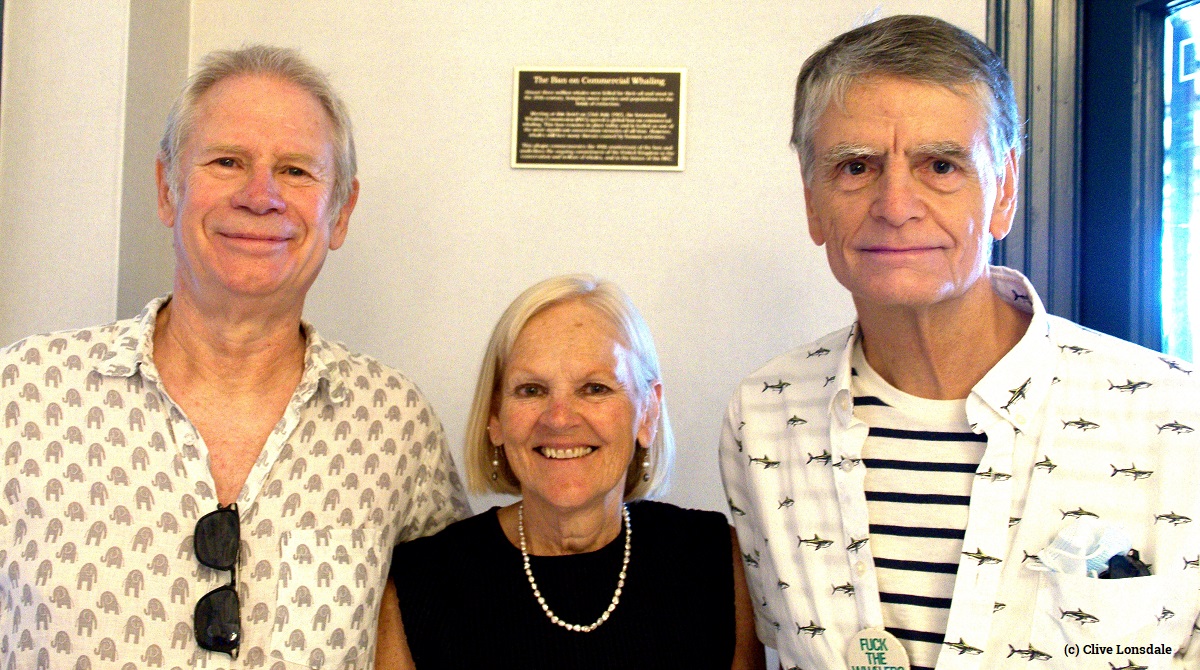
Reunited for the plaque’s unveiling are EIA founders Dave Currey, Jennifer Lonsdale and Allan Thornton (c) Clive Lonsdale
As a Greenpeace campaigner in the early 1980s, Allan had been instrumental in persuading governments around the world that an end to commercial whaling was the only way to stop the obliteration of whales. Dave had been aboard Greenpeace’s the Rainbow Warrior along with Allan as they confronted Icelandic whalers and exposed the horrors of commercial whaling. When the three of us founded EIA, we immediately started working with the IWC and are as committed to its work today as we were in the 1980s.
One of the things of which we constantly have to remind ourselves is that achieving a significant victory often means continuous work to protect it. The ban on commercial whaling was implemented in 1986 and since then Iceland, Japan and Norway and their supporters have maintained continuous and often insidious pressure on the IWC to overturn the ban and allow IWC-endorsed commercial whaling.
In particular, Japan carried out large-scale commercial whaling using the special permit loophole until it left the IWC in 2019. It now carries out commercial whaling in its coastal waters, ignoring IWC regulations and international law.
Norway lodged a formal objection to the ban and has been commercial whaling under this loophole since 1993. It also carried out ‘scientific’ whaling between 1988-94. Today, it is killing more than 500 minke whales a year, despite falling demand for whale meat and blubber.
Iceland started four years of ‘scientific’ whaling in 1986, as soon as the moratorium came into force. It left the IWC in 1982, re-joined in 2002 with a reservation to the moratorium and has been commercial whaling for fin and minke whales since 2006; 18 contracting governments lodged a formal objection to Iceland’s reservation and this objection remains today.
In the early 1990s, pressure grew on the IWC to allow the resumption of commercial whaling, with a few scientists claiming that some whale populations had sufficiently recovered. EIA strongly objected because losing the moratorium would have been a disaster for whale populations and would likely have led to illegal whaling and, potentially, the lifting of the CITES ban on international trade in whales.
The hole in the ozone layer had only been discovered in the mid-1980s, while scientific research was generating increased concern about the state of the marine environment due to the impact of global warming and chemical pollution. We argued that until such time as the impact on whales of these and other environmental threats was understood, it was impossible to calculate sustainable whaling quotas.
EIA led the call for the IWC to formally agree to study environmental threats to whales and this became a standing agenda item for the IWC’s Scientific Committee and Commission – and remains so today.
Over time, the IWC’s work transformed from its focus on calculating whaling quotas to being a world leader in analysing the impact of these threats on cetaceans.
Historically, the IWC only ‘managed’ the great whales that were subject to large-scale industrial whaling. Within two years of EIA being founded, we began submitting documentation to the IWC Scientific Committee and the Working Group on Whale Killing Methods on the hunting of pilot whales in the Faroe Islands and the pollutants found in the meat and blubber of the whales.
In 1991, with the strong support of the UK Government, we persuaded the IWC to pass a resolution on the Japanese Dall’s porpoise hunt, which was catching more than 40,000 animals a year as whale hunters sought to replace the great whales now protected by the moratorium with the smaller porpoises. This was the first-ever IWC resolution on a small cetacean species and in years to come resolutions on the Faroese pilot whale hunt and other small cetacean species were passed.
In 1994, the IWC agreed to establish a voluntary fund for small cetaceans and EIA became the first donor with a grant of $5,000. Today, despite some countries continuing to state that the IWC does not have competence to address small cetacean issues, the IWC has a broad portfolio of small cetacean work.
Our work with the IWC has shaped much of EIA’s evolution. Not content with telling the IWC it must address threats to cetaceans, we started to look into the illegal trade in CFCs, which surfaced during our research into the impacts of ozone depletion on cetaceans. This led to the establishment of a new ozone campaign focused on reducing emissions of ozone-depleting substances under the Montreal Protocol.
Over time it expanded its remit to tackle other greenhouse gases addressed by our Climate Campaign. Likewise, from research in the early 2000s on the impact of marine plastic pollution on cetaceans, our work to tackle plastic has expanded into a standalone campaign seeking a new global treaty on plastic pollution.
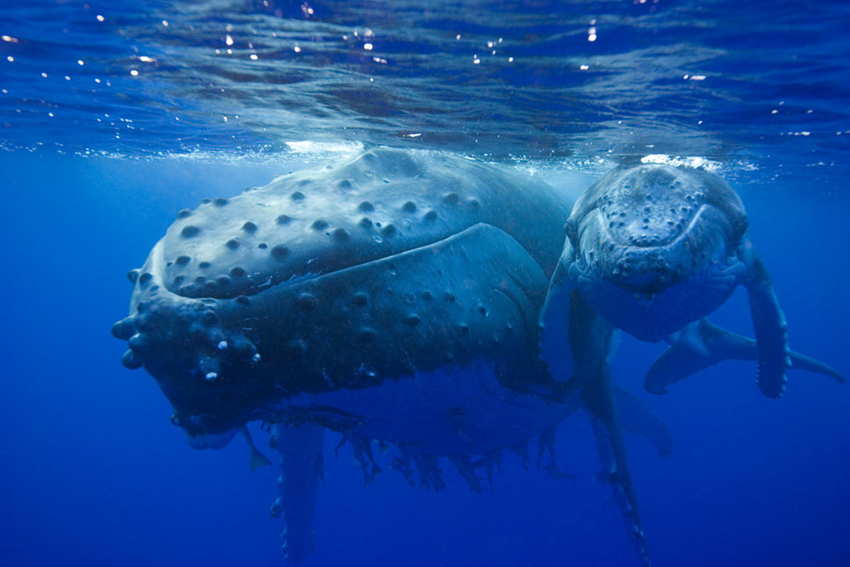
Despite the positive evolution of the IWC’s work to tackle global threats to cetaceans, pro-whaling countries have never stopped pressuring the IWC to overturn the moratorium. Since the 1990s, there have been several initiatives to resolve the perceived deadlock over commercial whaling in the IWC, each of which would inevitably have allowed some commercial whaling.
Working with like-minded governments and NGOs, we have always fought hard against such proposals and so far have succeeded in ensuring the ban remains in place.
Today, as we work toward the IWC’s Biennial Meeting (IWC68) in October, we will remain diligent in ensuring that the 40-year-old moratorium continues to protect whales into the future.
Working with other NGOs we have launched a 50 year vision for the IWC on how it can become a global leader in protecting cetaceans and ocean ecosystems.
Commemorating the 40th Anniversary of the moratorium on commercial whaling was certainly a very special moment in the history of EIA, which is entwined with the history of the IWC. Our commitment to this very special 70-year-old convention remains as strong today as it was when EIA was founded in 1984.



